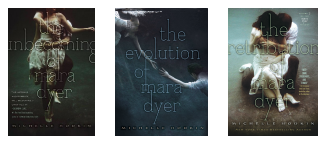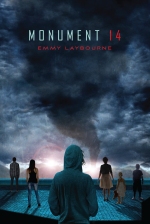
Ever wonder what happens when you write a book in which all of your characters are one dimensional? Curious abut whether those incredibly flat characters can be brought to life with some interesting, supernatural-istic events? Well, look no further!
When I read the synopsis of Burning by Danielle Rollins, I was certain I’d stumbled upon a find. A girls’ juvenile detention center in upstate New York? Check. A girl with creepy Firestarter-esque super powers? Check. A lead character who’s in for . . . something that must be bad, because she’s been there for 2 years? Check.
Yet something about this all in reading it just didn’t propel me along in the way I tend towards when the book is super engaging. As in, it wasn’t the kind of read that annoyed me when I had to peel myself away from the book. It wasn’t the kind of listen that made me a headphone using, walking zombie for 8 hours. I did listen to it on Audible, though I didn’t think the narrator was particularly good–she tended to make everyone sound a little boring, a little unexcited, even in the most exciting situations.
The book’s about Angela Davis, a young woman short of her 18th birthday, who’s been in the detention center for over a year. We follow her and her 2 cellmates on their day to day, through the routine of the center, through detailed explanations of what they do and why, how they go about doing it, what the limits and parameters set on them are. There are occasional moments when you get a vague Orange is the New Black vibe, but I mean very occasional.
What I’d been hoping for was a tale actively reflecting the realities of young women in a juvenile detention center. Or a really creepy story. Or both. What I got was none of the above. Don’t get me wrong, it’s still interesting, and I’m still somewhat curious about the next installment (somewhat being the key operative), but it really lacked that spark (ha!) that usually leaves me waiting for more.
Essentially, Angela and her cell mates are going about their lives, waiting for when it’s time to be released. They get in fights, they tell each other stories, they watch each others’ backs, they work in the food hall. And that’s about it.
Until 10 year old Jessica arrives–a tiny wisp of a girl, immediately sent to the segregation wing. And with her appearance, their world turns upside down. A new doctor shows up with fancy technology, money, and a flashy program to lure the girls to submit to her every test and whim. The previous director leaves without a trace. The guards all start acting weird. Cameras appear everywhere. Strange events start occurring around Jessica.
When SciGirls, the doctor’s pet project to help girls succeed, is introduced, magically the entire detention center is turned upside down, with girls all clamoring to study archaic science facts and pass “the test.” Angela and Jessica are maybe the only 2 completely uninterested in it. Angela because she just wants out by her little brother’s birthday, and Jessica because at 10, she’s apparently smarter than all the other girls in the center.
As the mad doctor takes ever-more-constrictive and crazy measures to seek out Jessica’s teddy bear (ahem, yep), and lays down increasing threats on Angela to do so, things only become more complicated.
A Few Thoughts:
- Well, I liked that there was a highly diverse cast of characters racially; on the toss side, they are in a juvenile detention center, so I’m not sure how I feel about it ultimately. Sadly, the touches that would have made these characters round–like backstories, more detailed development and personalities–was missing. We only see them through Angela’s perspective, and she’s pretty wrapped up in herself.
- Angela’s awfully self-focused. I mean, there’s an entire SciGirls thing happening, and she can’t be bothered to at least know what others think about it? To try to understand why it’s a deal? To question why Dr. Gruen would single her out for favors and to be Jessica’s buddy? Even in terms of what she did to be sent to the center, it’s almost as if the author’s trying to convince us that it wasn’t that bad–that her acts are excusable because she took the moral high ground in ratting out her ex boyfriend. I dunno–maybe I’m missing something, but I wasn’t impressed.
- The whole security guard romance? No. Just no.
- Jessica is probably–no, definitely–the most interesting character in the book, yet we get almost nothing from her. She’s the one with the interesting powers, but somehow no one notices this other than Dr. Gruen and Angela? I don’t buy it–especially if she’s had as much difficulty controlling those powers as is eluded to repeatedly. And why isn’t Jessica speaking? And what has she experienced that would lead her to be constantly terrified? If her home life was bad, it seems she might have developed some coping skills of some sort . . . and if not, why not? This was another character that lacked rounding–she’s basically the young, scared, superpower one, but that’s it.
- The teddy bear’s a thing, and we do get a really long, kind of boring, monologue by Dr. Gruen about why it’s essentially the most important thing in the world to her that kind of makes sense, but not completely. I’m still not entirely certain I understand Dr. Gruen’s interest in girls like Jessica, especially with the big reveal that (spoiler!) she’s a firestarter, too! Sooo . . . not certain why she feels the desperate need for this stupid bear? And, if it’s so important, why didn’t she just offer Jessica a new one in exchange for the old one?
- Have you noticed I keep using the word firestarter to refer to Jessica? It’s a classic Stephen King book reference, and one of several seen throughout. Another is the librarian, who keeps pets in the library, like the librarian in “Shawshank Redemption.” There are likely others, but I was struck by these the most.
- Jessica, from what I can tell, never lies to anyone. She will remain quiet (back to the being scared thing), she will act weird (back to the firestarter thing), and she is a loner, but she never lies. Yet when shit hits the fan, it seems that the assumption by all the girls–including Angela–is that Jessica must be lying, to the point where they’re probably traumatizing the kid. I dunno. Again, like with the teddy bear situation, it sort of seems like there were other ways to handle the situation, but because every character is so flat, they couldn’t imagine it.
Overall:
Meh. It’s ok. At no point was I anxious to get back to the story, and in all honesty, found my mind wandering pretty often. You want a kid who can make fires with their mind? Try Mr. King’s Firestarter. You won’t be disappointed with that one.









